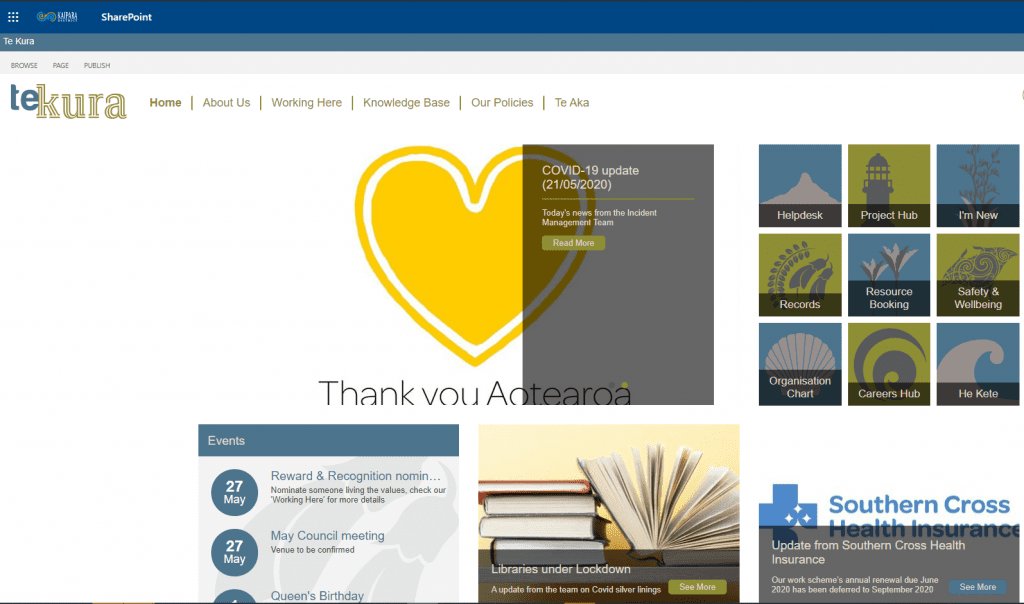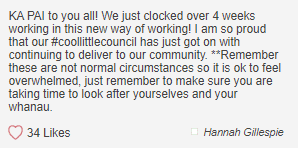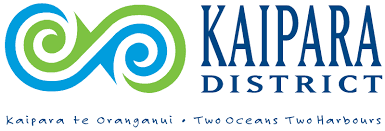Summary
Kaipara District Council (KDC) faced a daunting challenge, having returned from a period of compulsory administration in 2016.
A new management team was put in place to transform the approaches to risk, customer service, and organizational culture – they were 100% committed to becoming a modern and collaborative council.
The management team was making sterling progress when the COVID-19 lockdown hit. Their investment in Microsoft 365 for Content Services, however, put them in great shape for the remote working challenges.
KDC had a new intranet and were in the process of building one place for retrieval and storage of all council documents. Both the intranet and document management system (EDRMS), built on Microsoft 365, including SharePoint, Microsoft Teams, Stream, One Note, and Planner, as well as Azure and Power Automate.
Once lockdown hit, what really made the difference was the Microsoft Teams solution accelerator. The accelerator ensured the rapid rollout of Teams organization-wide.
Challenge
Following the appointment of Commissioners to govern Kaipara District Council in 2012, financial stability returned. To reduce debt, however, there was limited investment in the internal systems over 5 years.
In 2016, the council returned to full self-management. Over the subsequent 3 years, the executive team knew that staff needed a better experience to become empowered to make things happen and that providing the right tools could assist the staff with being more productive and collaborative.
Significant changes to internal systems were needed. There was no reliable, single place staff could go to for information, and staff were storing documents on unsupported, swollen network drives.
The executive team wanted to use tech as a catalyst to drive change, coupled with defining the values of the organization. General Manager Engagement and Transformation, Jason Marris, sums it up: “Office 365 gives us the tools to be agile and flexible in the way we operate, improves connectivity with our community, and builds trust.”
Kaipara staff, split over two offices more than an hour away from one another, were driving across the district to have meetings since the setup for remote meetings in the offices was so complicated. There was not enough space for all staff to work from the office due to unprecedented growth in the region and increased staff numbers. In addition, many KDC customers had city expectations for services from a largely rural council with a population base of just 24,000, compared to nearby Auckland’s metropolitan population of 1.6 million. “We want to be the #CoolLittleCouncil,” says Jason.
In early March 2020, a pivotal time in the digital transformation project at KDC, the New Zealand Government locked down the country with only 2 days’ notice due to COVID-19, to prevent the spread and save lives. The pressure was now on to ensure staff could continue to deliver services to citizens while the whole workforce was working from home. This was not a challenge to be underestimated with variable digital literacy amongst staff and an initial reluctance to learn new ways of working.
Jason sums it up: “It wouldn’t have been acceptable to our community if we couldn’t have continued to serve them. If the pandemic had happened a year ago, before we began investing in our digital transformation, it would have been disastrous. COVID-19 just fast-forwarded our thinking.”
Strategy
Recent government investment in a fiber network over the largely rural area meant KDC was poised to realize the benefits of cloud technology with Office 365.
In 2019, Information Leadership partnered with KDC to create an intranet to: foster values, culture, and a sense of belonging; improve communication and collaboration; and support staff to deliver exceptional customer experiences to citizens and ratepayers.
KDC chose the name ‘Te Kura’, meaning ‘place of learning’ in Māori, for their new intranet. With a large proportion of Kaipara’s population being of Māori descent, this name reinforces their intranet’s unique cultural identity and relevance in the organization.

Above: ‘Te Kura’ Kaipara District Council’s new Intranet home page with easy access in one place to information staff need to do their jobs.
Supporting the goal of excellent customer service, Information Leadership consolidated a central repository of information for assisting customer interactions into a new ‘knowledge base’ on the intranet. This supported the goals of the newly self-managing council by improving efficiency, content quality and consistency, and increasing trust and reputation.
“We love knowledge base – it’s our favourite thing” says Customer Centre Manager, Nadine Spring.
Information Leadership built this intranet on Microsoft 365 using SharePoint, Teams, Stream, One Note, and Planner, as well as with Azure.
‘Working here’, a collection of links to support the staff journey from their first day and initial induction, through to their continual development – is a one-stop-shop for staff for their daily working lives. KDC centralized the policies in one place to ensure staff understand what’s expected and can view highlighted rules and procedures.
Te Kura’s home page fosters shared values and a sense of belonging by encouraging staff to post good news stories, supporting discussions and hosting an internal “buy-sell-exchange.”

‘Ka Pai!’, a familiar NZ expression meaning ‘well done’ oozes the feel-good factor and staff share feedback on positive news about the council. The shout outs ripple throughout the council as staff can “like” each Ka pai.
The CEO shares regular updates with staff via her blog; this has been especially important to foster connectedness while staff work remotely. Using Stream, her ‘Lockdown with Louise’ videos are accessible on demand by staff wanting to get an update from the CEO.
Providing one place for retrieval and storage of all council documents was the next initiative to improve the staff working experience and protect important documents, previously stored on swollen, unsupported network drives.
KDC chose the name Te Aka, “the vine”, for the new EDRMS. Before the migration of content from network drives, Information Leadership worked with KDC to deliver a framework with the key functions and activities the council identified. This ensured it was easy for users of Te Aka to find and file documents according to the framework once content had been migrated.
Improving project capability was a priority, and the project team used Microsoft Teams and Planner to create project hubs and shift to task-based project management, including daily stand-ups. Behind the scenes, KDC built internal capability to ensure self-sufficiency. Information Leadership delivered power user training to a subset of staff over a short period. SharePoint was no longer perceived to be under the realm of IT and, once training was complete, staff in business units began using their newly acquired skills to build project hub sites to consolidate their learning.
The project team organized an expo to showcase existing use of Teams and Office 365 by early adopters in business units which generated huge excitement amongst staff about how simple the tools were to use and what was possible.
Rollout of the project pivoted rapidly in March 2020 when the country was given 48 hours’ notice before going into lockdown. KDC reprioritized and accelerated Teams deployment to support collaboration while staff were working from home. The team developed training on the new tools remotely using Teams and broke it down into small digestible chunks more conducive to an online environment, because lengthy in-person training was no longer an option. The team also used Teams to provide support to staff on the fly, both as a repository of training videos and for providing staff support using video calls and instant chat.
The team used Information Leadership’s solution accelerator, iWorkplace Teams Framework, to build a process to streamline and rapidly roll-out structured Teams. Once a user requested a site and it had been approved, the new site was recorded in a register and generated using workflows behind the scenes. If it was a project site, it had a standard folder structure with a taxonomy that related to the business functions and activities at KDC. Michael Juer, IT project manager sums up the roll-out and how easy it was for the users, “after pushing a few buttons and a couple of clicks the whole thing just happened – that’s how we managed to deploy Teams to the whole organization.”
Nadine, who has vast experience working in call centers, was keen to ensure her team had all the information at their fingertips to do their job well while working from home. Reducing the number of systems that staff had to access to source information and bringing it together into one interface has made all the difference “Teams has become our one-stop-shop for information – the team love it.”
Staff can answer questions on the phone without having to call customers back by using the instant chat messaging in Teams to get information from KDC staff located in other parts of the building or at the office located over an hour away.
A recent example of exceptional customer service using Teams was that a dog owner was reunited with her dog in what otherwise would have been a tense situation for council staff. An animal control officer found an unregistered dog and took it to the council animal shelter. The officer then visited the most recently listed owner to advise them that they were required to pay their registration fees at the council offices before they would be able to collect the missing dog. Using Teams out in the field via the mobile app, the animal control officer advised the customer services staff back at the council that the dog owner would be coming in to pay and provided all the details “No one wants to repeat the story when it wasn’t a nice one and when the dog owner walked into the council building the customer service staff were ready and waiting to process the payment.” says Nadine.
With Office 365 in place, staff are now empowered with the tools to drive business improvement activities. A recent example is the replacement of a highly manual process for enforcing the correct installation and maintenance of private septic tanks to prevent contamination into nearby water ways. The KDC team went from spreadsheets and Outlook to SharePoint driving automatic letter generation in Word via Power Automate and auto-generated reports presenting geospatially which septic tanks were overdue. Change Manager, Cherie Jourdain, reflects on the transformation, “the tools are so compelling that when staff see what can be done they see how their life can be made so much easier, and then they use Teams to discuss and further refine their ideas to make it better.”
Since COVID-19 it’s literally business as usual – we have meetings twice a day via Teams. A lot of this is due to the digital transformation and moving everything onto SharePoint Online in Office 365.
Nadine Spring (Customer Services Manager, Kaipara District Council)
Results
Rapid transformation. Information Leadership’s solution accelerator, iWorkplace Teams Framework ensured KDC could rapidly deploy Teams to the whole organization inside a week through automated provisioning and workflow. Michael recalls, “lockdown was announced on Wednesday night, Thursday to Friday was spent planning. Monday to Thursday the following week was the preparation, and Friday deployment began and was completed one week later. In total, sixteen teams were deployed.”
Engagement across the council has improved says Cherie; “staff post in Teams chat about business improvement ideas, replies back are made in real time and ideas about ways to be more productive can be refined – whereas before this kind of conversation was hidden away in staff inboxes.”
Less email. Cherie has noticed a huge reduction in the number of emails as the organization has moved onto Teams. People working from home, who previously would have found this a big technical challenge, can keep doing their jobs, including remote meetings, as the tools are so intuitive and easy to use.
Teams support new ways of working. During the period that included lockdown, Teams usage went up over 1000% and 83% of users were active. Use of Teams for meetings and instant chat all surged during the lockdown and have continued to remain high as lockdown was eased and many staff continued to work from home. In addition, 46% of users accessed the Teams app via their mobile phone.
From a project management perspective, Michael sums up his experience “I have a much better handle on what’s going on. I can find things more easily and communicate more readily, track tasks and know what we’re ahead on and what we’re behind on – we have a thirty-minute standup to look at the work in progress. It’s become very effective; communication is clearer than before and the control is better than ever.”
Working remotely. Within 24 hours of the announcement of lockdown, 75% of the KDC customer services team were delivering exceptional customer services to citizens while working remotely due to ease of access to Office 365 at home.
Use of Teams by the Customer Services Team during lock-down has sustained the close team culture and competitive spirit. Twice per day Nadine holds ‘team meetings’ via Teams. Once important updates are completed, there’s a general knowledge quiz. Nadine laughs as she recounts how it works; “everyone chooses an animal sound and whoever makes the sound first gets a chance to answer the question. Sometimes team members find it hard to make their sound or whistle when they are laughing so hard.” The quiz competition on Teams has helped to keep them connected while working remotely. A channel called “Teams chat” is used for communication throughout the day to share office banter.
Jason reflects on the digital transformation, “we’ve gone from zero to 100 – it’s been fulfilling to see the people at KDC learn so much, do so much, and be happier.”

